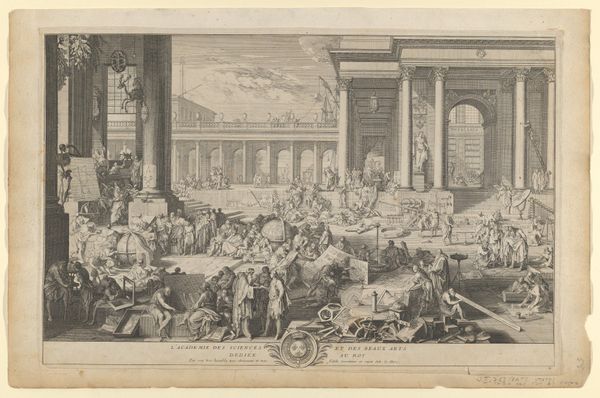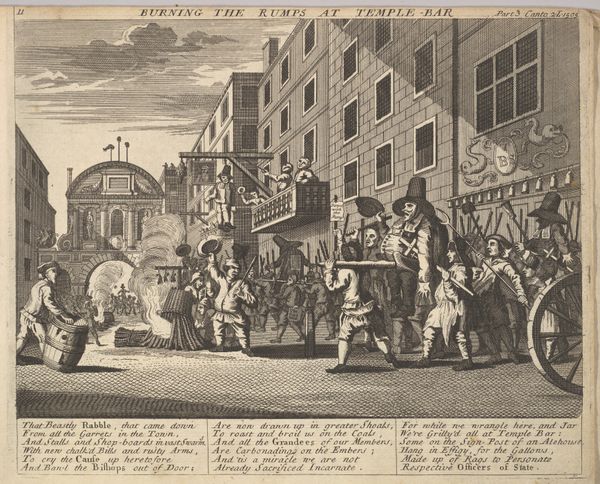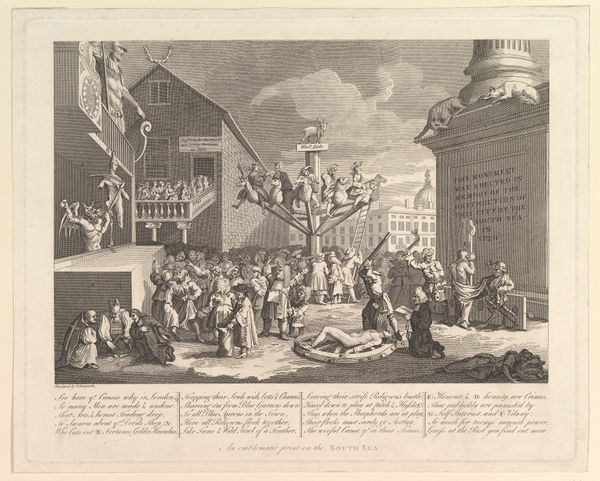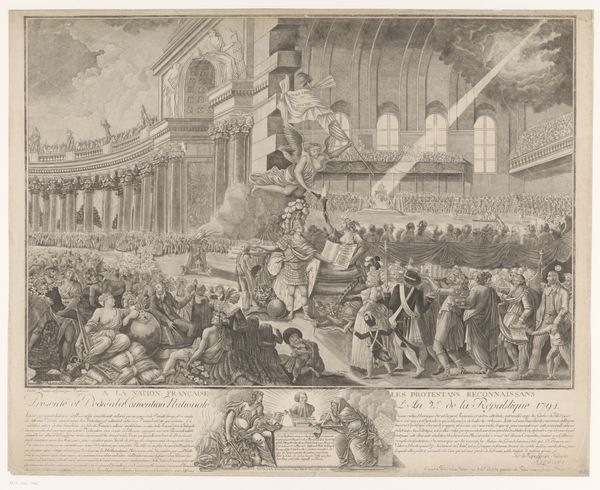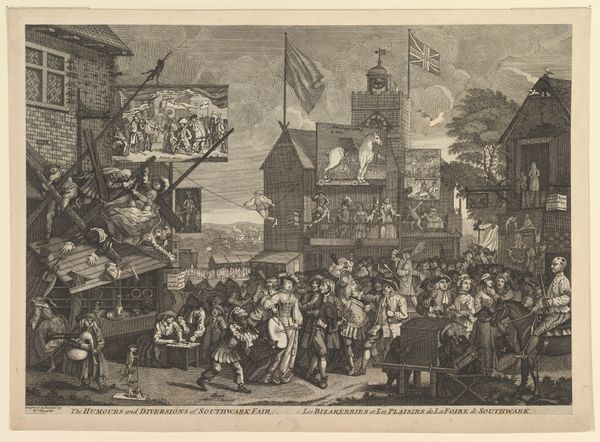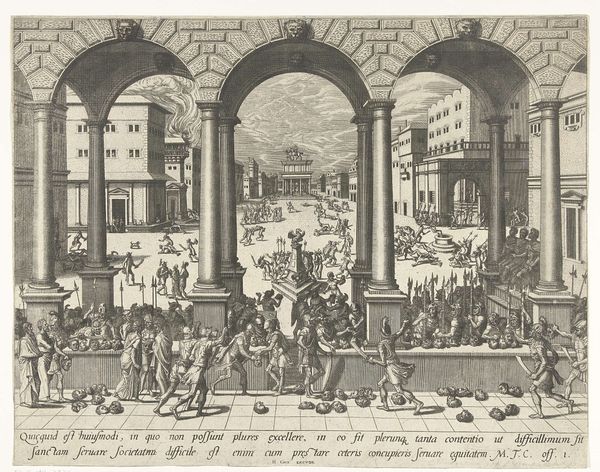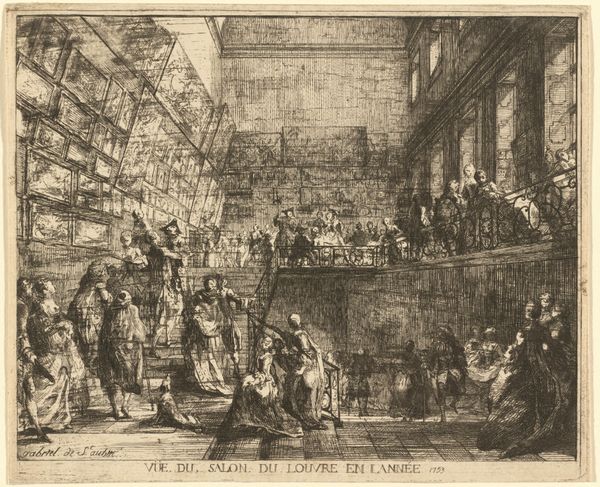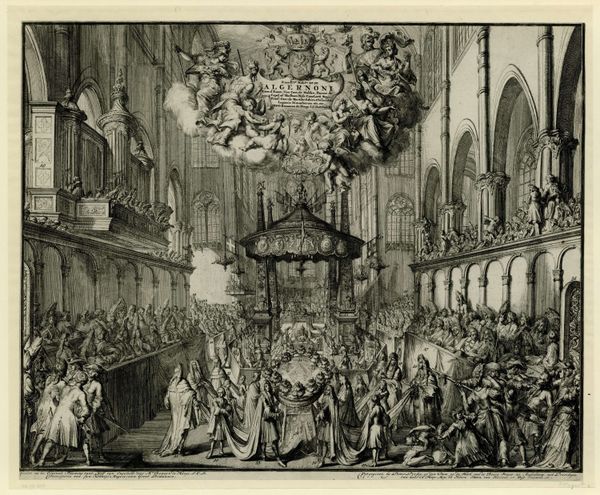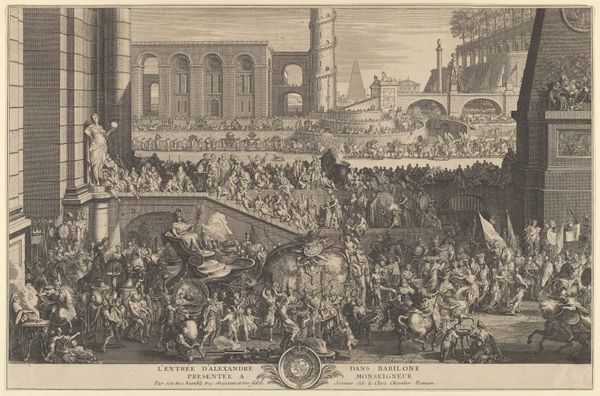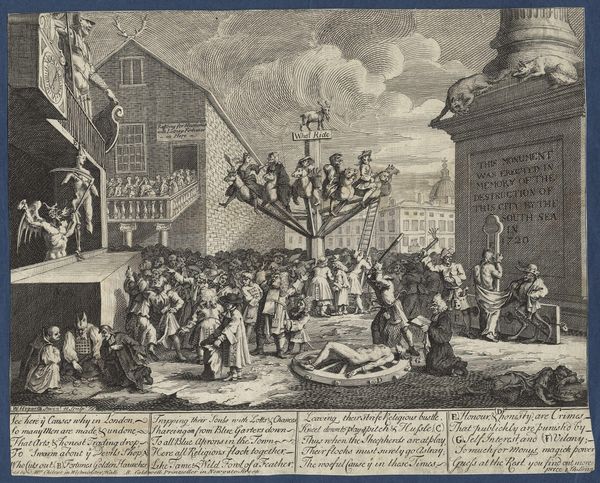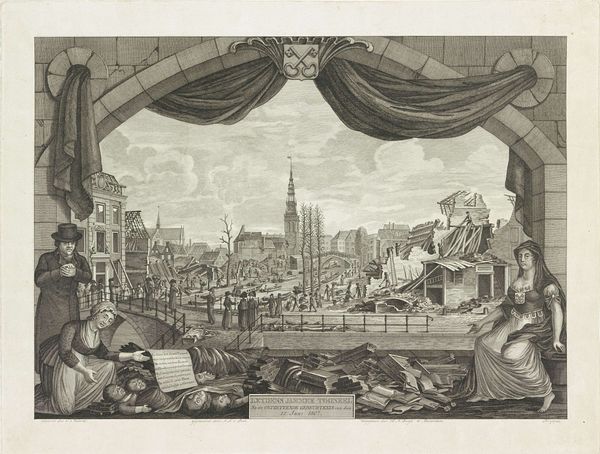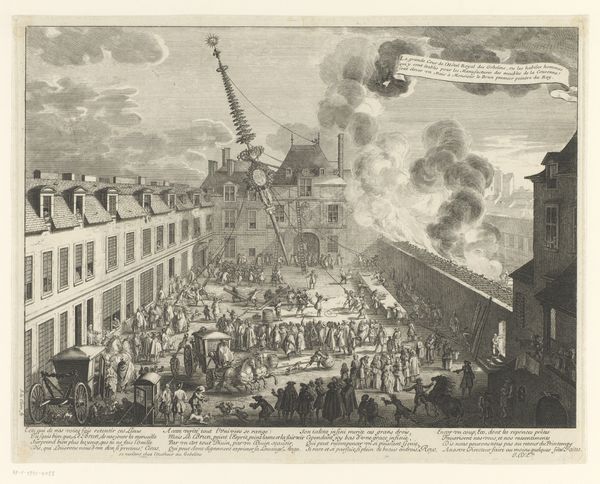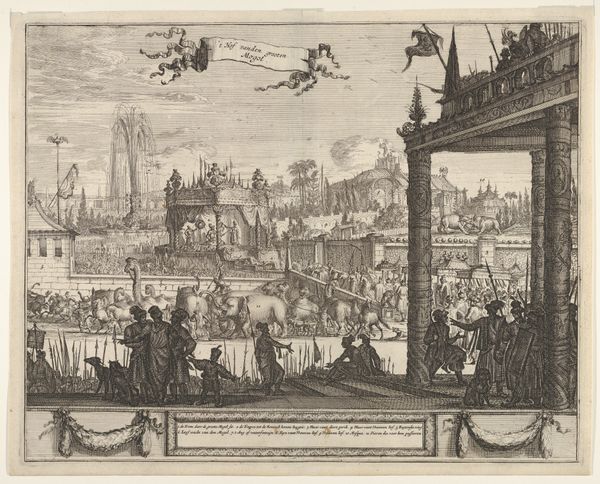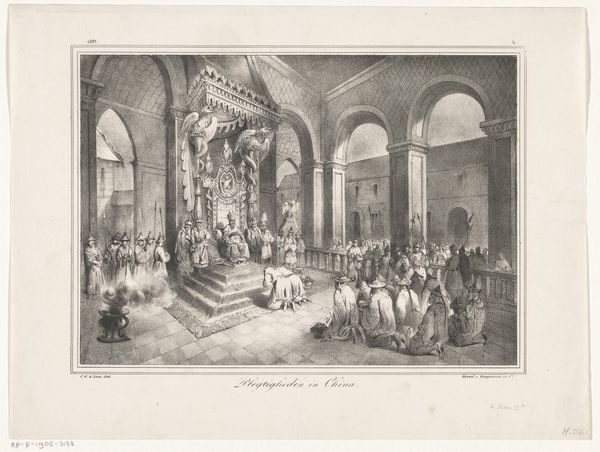
Dimensions: sheet: 10 x 12 5/16 in. (25.4 x 31.3 cm)
Copyright: Public Domain
William Hogarth etched "The Times, Plate 2," a print filled with symbols reflecting the turbulent politics of 1762 England. Dominating the scene is the 'Fountain of Credit,' now sputtering, symbolizing the nation’s financial instability, overseen by a statue of King George III. The image abounds with motifs of discord: warring factions, a coach spewing propaganda, and figures in the stocks labeled “Impartiality” and “Liberty.” Think of similar allegories across time, like the broken cornucopia representing economic despair or the scales of justice, here inverted. Note, how Hogarth uses the motif of a flood—a deluge of liquid pouring from the coach, overwhelming all below it—to evoke chaos and upheaval. This same symbol of the flood appears in ancient Mesopotamian myths, signifying divine wrath and societal collapse. Throughout history, floods have represented purification and destruction, tapping into a primal fear of being overwhelmed by uncontrollable forces. Hogarth masterfully invokes this collective memory, stirring deep-seated anxieties about the state of his nation. This complex tapestry reveals the cyclical nature of history, where themes of power, corruption, and social unrest endlessly resurface, each time molded by the unique anxieties of the age.
Comments
No comments
Be the first to comment and join the conversation on the ultimate creative platform.
